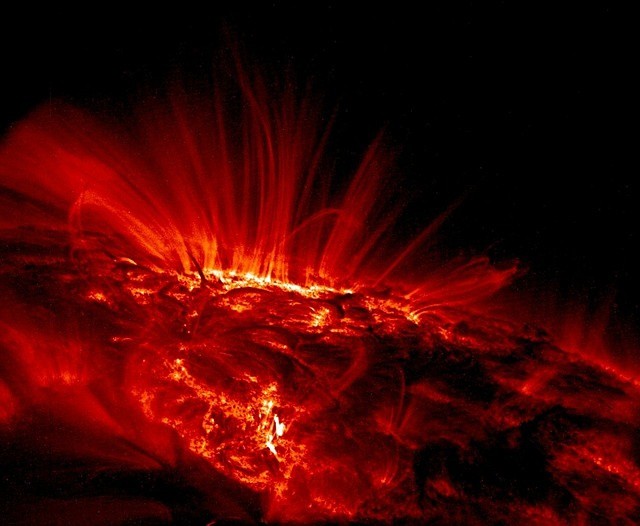
The Sun has released a huge plasma blob towards the Earth that is capable of triggering a geomagnetic storm on the magnetic field of the planet.
Solar Storm Unleashed
Solar flares are strong electromagnetic radiation bursts that are generated from the solar atmosphere. These flares can release magnetized bubbles of plasma into space, known as coronal mass ejections (CMEs). These clouds that are high in energy stretch outward and slam into the magnetosphere of the Earth.
The collision could lead to a geomagnetic storm, which can further produce displays of auroras as the energized particles of the CME ionize molecules of nitrogen and oxygen in the atmosphere.
The National Oceanic & Atmospheric Administration (NOAA) notes that while the storms may affect ground-based infrastructure as well as satellites, the general public need not be concerned.
Radio Blackouts Felt; Impending Geomagnetic Storm
It has been reported that a radio blackout was picked up over the Pacific Ocean on Monday afternoon. This came after the solar storm hit the Earth. According to data, the incident took place at roughly 4:20 p.m. ET off the coast of South America and western US. However, it only went on for a few seconds.
The energized particles' powerful stream also affected the poles, leading to outages that went on for roughly seven hours. According to the Space Weather Prediction Center (SWPC) of NOAA, there was a 60% likelihood that the power grid would end up disrupted by the storm.
Another storm may hit the Earth. This could also affect radios and aviation communication and degrade the operations of satellites.
The events are also expected to produce ethereal aurors in the far south, in areas such as South Dakota, northern Wyoming, Wisconsin, Iowa, New York, Michigan, Vermont, New Hampshire, and Maine.
Physicist Tamitha Skov also explains that radio blackout risk has been increasing, adding that two M-class flares have also taken place and that they could become larger and longer soon. Skov notes that NOAA/SWPC has a R1-R2-level risk for radio blackout at 60% in the coming days.
Skov also notes that two or three storms could follow this one. The succeeding ones could offer several blows through January 25.
The solar eruption took place as the Sun nears its peak of its 25th solar cycle. It was previously reported that this activity peak, called the solar maximum, would arrive earlier than estimated. During this period of peak activity, more sunspots will be seen.
Check out more news and information on Space in Science Times.
© 2025 ScienceTimes.com All rights reserved. Do not reproduce without permission. The window to the world of Science Times.










